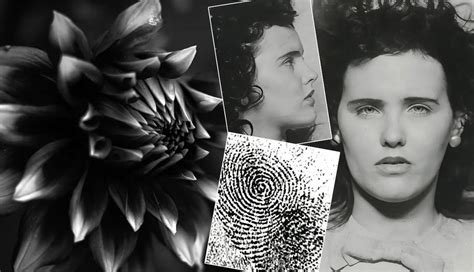The Black Dahlia case is one of the most infamous unsolved murders in American history, captivating public attention for over seven decades. The gruesome nature of the crime, coupled with the lack of resolution, has fueled enduring fascination and speculation. On January 15, 1947, the mutilated body of Elizabeth Ann Short, a 22-year-old woman, was discovered in a vacant lot in Leimert Park, Los Angeles. The crime scene and subsequent investigation unveiled a complex web of details that have become synonymous with the term “Black Dahlia.”
Historical Context and Victim Profile
Elizabeth Short, born on July 29, 1924, in Boston, Massachusetts, moved to California in 1943, seeking a new beginning. Her early life was marked by instability, with her father abandoning the family when she was young. Short’s aspirations in the entertainment industry, as well as her personal life, were filled with struggles and disappointments. The moniker “Black Dahlia” was coined due to Short’s dark hair and a Hollywood myth that she wore black clothing and had a penchant for noir fiction.
Discovery and Investigation
The discovery of Short’s body by a local resident, Betty Bersinger, as she was walking with her three-year-old daughter, marked the beginning of a highly publicized and extensive investigation. The Los Angeles Police Department (LAPD) launched an inquiry that would eventually involve hundreds of officers and thousands of leads. The mutilation of Short’s body, which included evidence of extensive torture, was particularly shocking. The investigation revealed that Short’s body had been washed and posed in a deliberate manner, suggesting a calculated and sadistic crime.
Key Evidence and Theories
Over the years, numerous theories and suspects have emerged, but none have been conclusively linked to the crime. Some of the key evidence includes:
- The “Black Dahlia” Letter: Shortly after the murder, the LAPD received a letter allegedly from the killer, containing Short’s personal belongings and cryptic messages. The authenticity of the letter has been debated, with some believing it to be a hoax.
- Robert “Red” Manley: An early suspect, Manley was the last known person to have seen Short alive. However, his alibi checked out, and he was eventually cleared as a suspect.
- Arnold Smith: A former acquaintance of Short’s, Smith became a person of interest due to inconsistencies in his alibi. Despite suspicions, there was insufficient evidence to link him directly to the crime.
- Dr. George Hodel: In 2018, the LAPD reopened the case after receiving new evidence from a former detective, Steve Hodel, who claimed his father, Dr. George Hodel, was the killer. Although intriguing, the case remains unsolved.
Impact and Legacy
The Black Dahlia case has had a profound impact on popular culture, inspiring numerous books, films, and documentaries. The crime’s brutality and the subsequent media frenzy set a precedent for future serial killer investigations, highlighting the importance of forensic psychology and public awareness. The case also underscores the challenges faced by law enforcement in solving crimes that lack conclusive evidence, despite extensive resources and public interest.
Psychological Analysis
Psychological profiling, a relatively new field at the time of the Black Dahlia murder, has been applied retrospectively to understand the mindset of the perpetrator. Characteristics such as intelligence, cunning, and a deep-seated desire for notoriety are often attributed to the killer. The calculated nature of the crime, including the torture and posing of the body, suggests a level of sophistication and psychopathy. However, without a confirmed suspect, these analyses remain speculative.
Conclusion
The Black Dahlia case represents a chilling intersection of violence, mystery, and the darker aspects of human nature. As one of the most infamous unsolved murders in history, it continues to captivate and horrify, serving as a reminder of the complexities and challenges inherent in criminal investigations. The enduring fascination with the Black Dahlia case not only reflects a morbid curiosity but also a deep-seated desire for justice and resolution, which, to this day, remains elusive.
FAQ Section
What were the circumstances surrounding Elizabeth Short’s move to California?
+Elizabeth Short moved to California in 1943, seeking a new beginning and aspiring to work in the entertainment industry. Her early life was marked by instability, with her father abandoning the family when she was young.
Who were some of the primary suspects in the Black Dahlia case?
+Among the suspects were Robert “Red” Manley, the last known person to have seen Short alive, and Dr. George Hodel, whose son Steve later claimed was the killer based on new evidence. However, neither was conclusively linked to the crime.
What impact has the Black Dahlia case had on popular culture and criminal investigations?
+The case has inspired numerous works in film, literature, and documentary, contributing to its enduring public fascination. It also set a precedent for the use of psychological profiling in criminal investigations and highlighted the importance of public awareness and cooperation in solving crimes.
What are some of the psychological characteristics attributed to the Black Dahlia killer?
+Characteristics such as intelligence, cunning, and a deep-seated desire for notoriety are often attributed to the killer. The crime’s calculated nature suggests a level of sophistication and psychopathy, although these analyses remain speculative due to the lack of a confirmed suspect.
Why does the Black Dahlia case continue to fascinate the public?
+The case’s enduring fascination can be attributed to its gruesome nature, the lack of resolution, and the insight it provides into the darker aspects of human psychology. It also reflects a deep-seated desire for justice and a need to understand the motivations behind such heinous crimes.
Are there any ongoing investigations or new leads in the Black Dahlia case?
+While the LAPD officially reopened the case in 2018 based on new evidence provided by Steve Hodel, suggesting his father Dr. George Hodel as the killer, the case remains unsolved. The LAPD continues to receive tips and consider new evidence, but as of the last update, no conclusive linkage to a suspect has been established.


